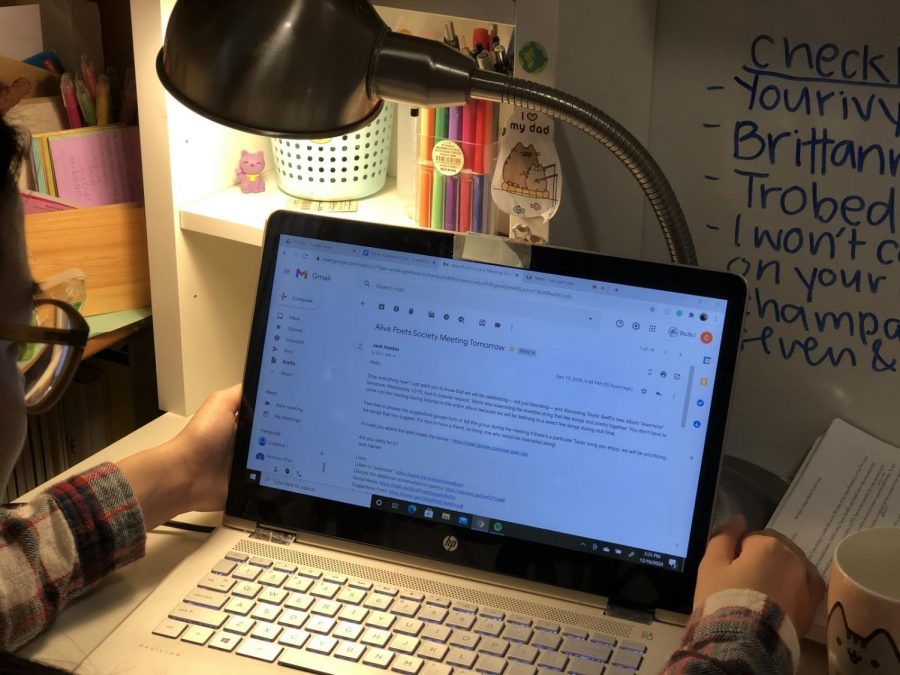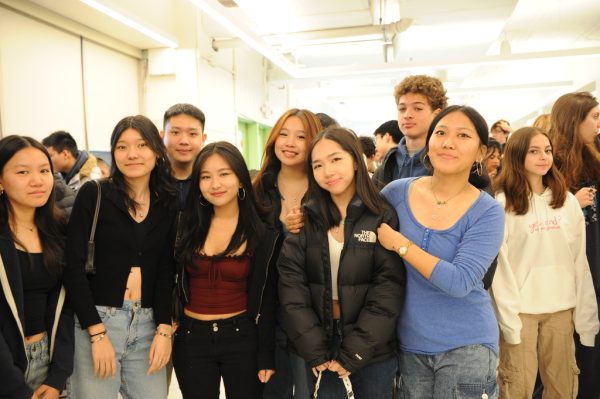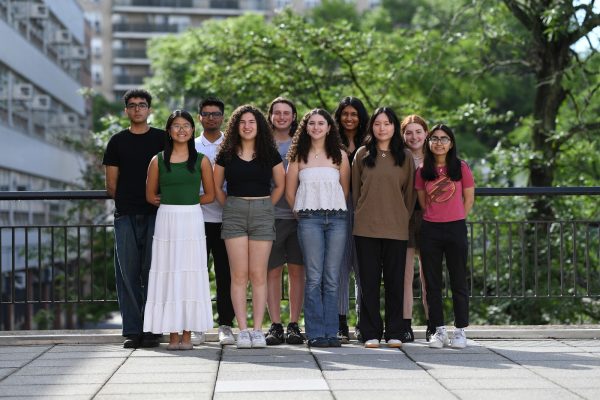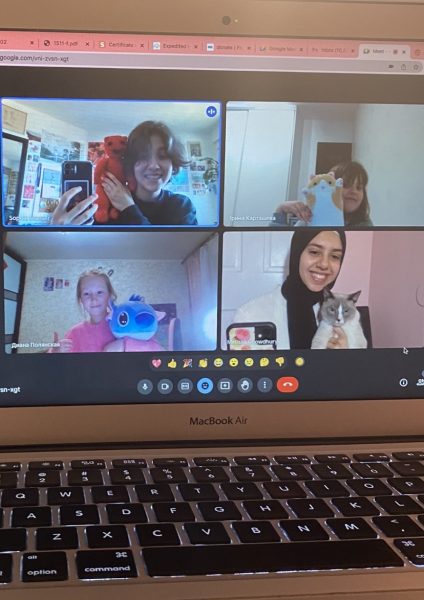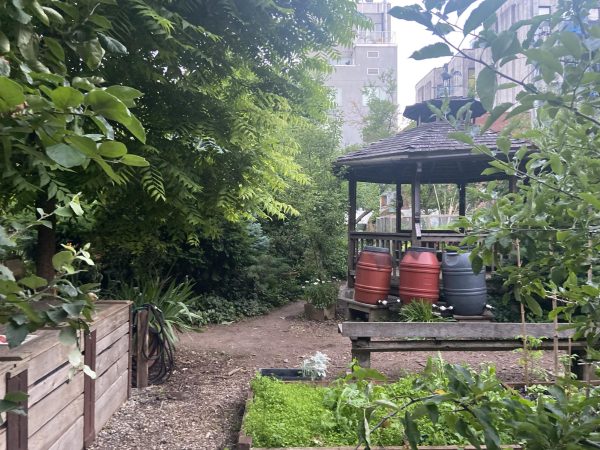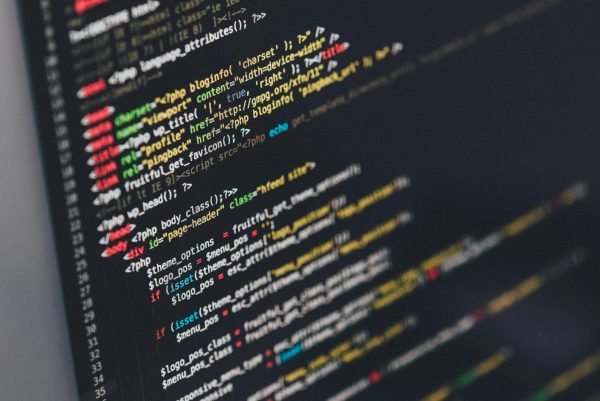Dear Reader… No, Not Dear: The Perils of Email Etiquette
With restricted methods of communication due to the Coronavirus pandemic, students are writing more emails and questioning their email etiquette.
Despite all of emails’ shortcomings, they still stand as a rapid form of communication used to deliver messages to large groups of people.
Dear Reader,
No, not dear. I don’t know this person… But is “dear” outdated? Do people even use that word anymore? Who even uses “dear” in real life? Wow, I sound really human with this copy and paste introduction. How do I avoid sounding too formal without coming across as disrespectful? This is supposed to be casual. How about just “hello”?
Dear Reader Hello Reader,
Although I am often succinct and direct, I find writing emails to be a constant struggle. Not because I need to do years worth of dusting off old books and digging up ancient burial sites to write one, but because of the sheer multitude of directions that an email can take. In that sense, emails are like poetry — except the knowledge that an email can be interpreted in many different ways is anxiety-inducing, rather than awe-inspiring. One word, one comma, or one space could be a treacherous turn, so every little aspect of an email must be chosen with care. At least poetry is forgiving — if a comma is misplaced, it’s considered “art.”
With all Bronx Science students currently participating in fully remote learning, the most convenient and widely-used option for students to get in contact with their teachers is through email. Dr. Scott Savaiano, a teacher in the History Department and someone who prefers emails to resemble letters in their formality, said, “I get a lot of student emails, and they’re a little bit less formal [than before schools went remote]. Fewer salutations and closings.”
Online blogs instruct students to “be formal” when drafting an email to their teachers. “Always use this ‘formal’ greeting in this scenario, and that ‘formal’ salutation in that scenario.” Ask ten passersby on the street what a “formal” email looks like: they will each give a different answer, some in direct contrast with one another. So what does formality truly look like?
Emails lie in the confusing gray area between formality and informality. Emails are online, giving the impression of a casual text message, but they also feel like letters with all of their assumed conventions, tainted by insincere, but obligatory, greetings and salutations. Iskander Khan ’22, who dislikes how email threads appear on Gmail, said, “They need to be more like texts.”
Poets will write poems knowing that critics will criticize; students will write emails knowing that teachers will have an impact on their chances of getting an error fixed on PupilPath, or a recommendation written for a summer program. For many students, formality is based upon their teachers’ guidelines for emails, if it is given to them. This does not always facilitate the drafting process, however. “A teacher’s pointers affect the way that I write emails because I reread the pointers a thousand times in order to make sure that my emails are short but also clear,” said Jillian Chong ’22.
“Teachers may deny a request because the quality of the email was unclear or ‘came off as rude.’ The quality of the email affects the teacher’s perception of me as an individual,” said an anonymous student ’22. The hesitance and fastidiousness in email writing — associated with the fear of misunderstanding from the party on the other side of the screen — is a phenomenon that has implications beyond school, influencing important decisions like future job prospects. Are some students just overthinking it or is this urge to be ultra-careful warranted?
Social psychologists Dr. Vanessa Bohns and Dr. Mahdi Roghanizad found that a face-to-face request is 34 times more likely to yield a positive response than an email.
Teachers, however, do not feel the same pressure in a student-teacher interaction. Where copying and pasting ‘I hope this email finds you well’ for the thirteenth consecutive time can feel like 1800s letter writing and soulless, skipping over these formalities can feel abrupt and demanding. “Oftentimes, I will be overly formal and will receive an emoji as a response from a teacher,” said Selina Li ’22.
Whether an email is verbose or terse, Ms. Carliann Costanzo, a teacher in the Mathematics Department, said, “For the most part, though, I would say that Bronx Science students are very cordial and respectful. I would advise students who are communicating with teachers, internships, colleges, etc. to always err on the side of formality. It shows that thought and respect went into that communication.”
Emails diminish human interaction down to words, and though punctuation and impassioned diction can help to express human emotion, human expression is lost in translation. A UCLA study found that the large majority of a message’s interpretation is derived from intonation and body expression, leaving 7 percent of derivation from purely words.
Even close friends have trouble determining the exact emotions of the other through email. This is why some students feel more comfortable speaking to teachers face-to-face. “Teachers in person are a lot more chill; I guess I’m not really sure or comfortable with talking to them over the internet rather than in person,” said Li.
With so many forces currently out of your control due to the Coronavirus pandemic, the best way to email someone cannot be written plainly into a guidebook — the large scope of communication cannot be contained in a manual. All that can be assured is that behind the glass of your device, lies another human who writes emails, too.
Cheers,
Cadence
With so many forces currently out of your control due to the Coronavirus pandemic, the best way to email someone cannot be written plainly into a guidebook — the large scope of communication cannot be contained in a manual. All that can be assured is that behind the glass of your device, lies another human who writes emails, too.
Cadence Chen is an Editor-in-Chief for ‘The Science Survey.’ She enjoys journalistic writing for its artistic concision and sharp insights. Cadence...

